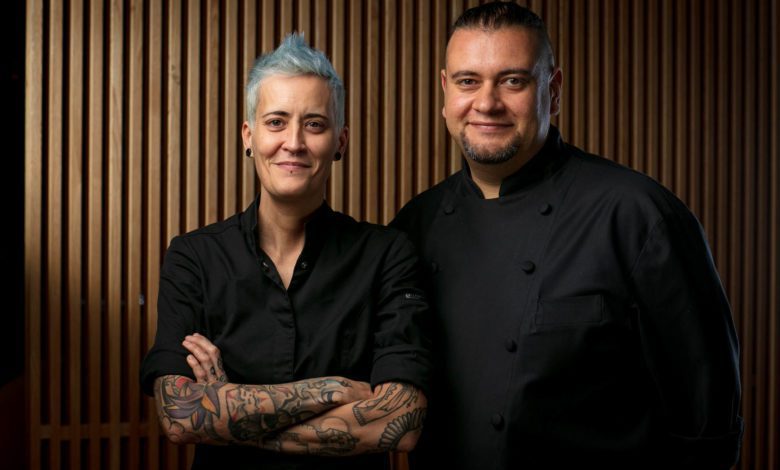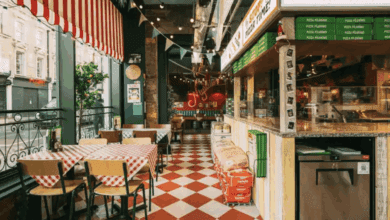A new venture: A restaurant opening from a Chef’s perspective
Executive head chef Jordan Sclare and head chef Begonya Sanchez at the newly opening Marleybone location of Chotto Matte give insight on how developing its menu has been crucial to the success of the brand, the challenges of creating different identities across its different restaurants, and what makes customers come back to Chotto Matte

Register to get 1 free article
Reveal the article below by registering for our email newsletter.
Want unlimited access? View Plans
Already have an account? Sign in
A restaurant opening always comes with some risk. Just as new venues open, another one shuts, with the secret behind success stories often allusive. One success story is Chotto Matte, a Japanese-Peruvian fusion restaurant, which opened in 2013 in Soho. It has since grown to span several continents, with venues in Miami and Toronto, with future openings coming in Doha and Riyadh.
To gain an insight into the secrets behind this expanding brand, Catering Today spoke with executive head chef Jordan Sclare and head chef Begonya Sanchez at its latest Marleybone location. Sclare has overseen the development of the Chotto Matte menu and taste identity having been with the restaurant since its inception, while Sanchez arrives with the new opening. Both have experience in fine dining, before returning to their passion; Asian food.
They give insight on how developing its menu has been crucial to the success of the brand, the challenges of creating different identities across its different restaurants, and what makes customers come back to Chotto Matte.
Forming Style
Identifying and creating the signature Chotto Matte style was a meticulous process. Sclare details the weeks of travel and tasting which was undertaken before landing on its ‘Nikkei’ style, a fusion of Japanese and Peruvian cuisine.
“We were developing and developing and doing tastings every week, and getting the menu to where it was good enough for us to open,” he says. “Then we flew to Peru and travelled all around Lima, taking in all the restaurants, festivals, carnivals and markets and all these wonderful food experiences, before coming back and opening Chotto Matte in 2013”.
For Sclare, it is this signature style of Nikkei that makes Chotto Matte stand out from the rest, and that it is this uniqueness that is key to their success. It’s fusion of flavours keeps both the chefs and customers interested and eager to develop, and lends itself to an expansion, he believes.
He continues: “Opening the box of flavours of Japanese mixed with Peru was just addictive and amazing for me when I worked at creating the taste here at Chateau Mata. When I compare the rules that we’ve created and developed and allowed to use here, to other London Japanese restaurants, which are only traditional Japanese, I feel like our flavour and the taste profiles are so much more my style. And I think customers respond to that uniqueness.”
Creating an individual style in Marleybone
Expansion is something every restaurant craves, but can also often be a double-edged sword. While it represents proof of success and a validation of what you are trying to achieve, simply replicating the original without exploring new avenues of direction with each branch could lead to a dilution of the product. For Sanchez, who is a new addition to the Chotto Matte brand, and Sclare, having clarity on each individual restaurant’s place within the system is crucial.
They explain this means being aware of the differences and nuances in clientele, atmosphere, and area, and adapting each menu accordingly. Sclare and Sanchez outline that the inspiration for the Marylebone menu was “very much based” on the signature menu of the Soho flagship, but adapted and expanded to meet the upper market clientele expected in Mayfair.
“When we’re expanding, we’re actually trying to expand with our signature menu and the best dishes that we’ve sold in our flagship store here in Soho for the last eight years, but then we will be expecting a slightly different clientele,” they say.
“Marleybone is a different area to Soho; there’s slightly more budget for the clientele that are eating closer to Mayfair, and there is hope we get an opportunity to use more expensive ingredients. We started with where we think the trends would go with Chotto Matte style food, but we’ve really added in a luxurious element in Marleybone. For example our sea bass ceviche in Soho will be wild sea bass ceviche in Marleybone, and we’ll have the addition of foie gras and king crab and truffles.”
It is this freedom to adapt, but clarity about how each venue fits into the overall Chotto Matte brand that they believe is “crucial” to the success of its expansion.
For Sclare and Sanchez, adaptation comes easily as an evolution of flavours is built into the Chotto Matte brand. They recognise the potential for “traditional Japanese sushi chefs who stick to only Japanese traditions and won’t understand why we add chilli and coriander and lime and all these other ingredients into the food from Peru”.
But for Chotto Matte an embrace of the tension between the traditional and the new is key to the evolution of Nikkei cuisine. Sclare and Sanchez note how they have chefs who stand on “both sides” of the debate in their kitchen. One’s who feel protective over cuisines with rich traditions, and one’s eager to combine and take flavours into new territories. This approach to the menu is mirrored in the company’s approach to expansion, and how it evolves its product across branches. With an eye on the opportunities for exploration expansion offers, but also mindful of the origin, and what made the product work in the first place.







